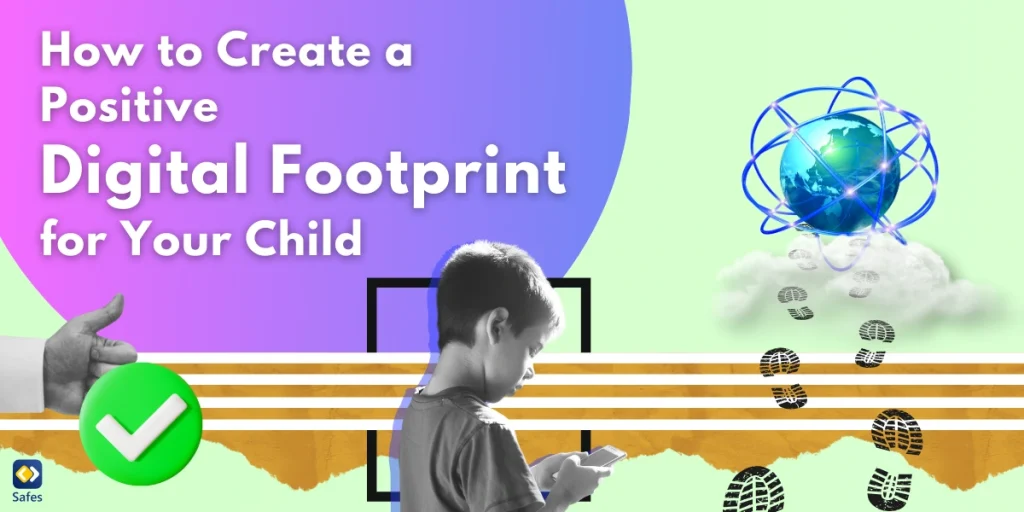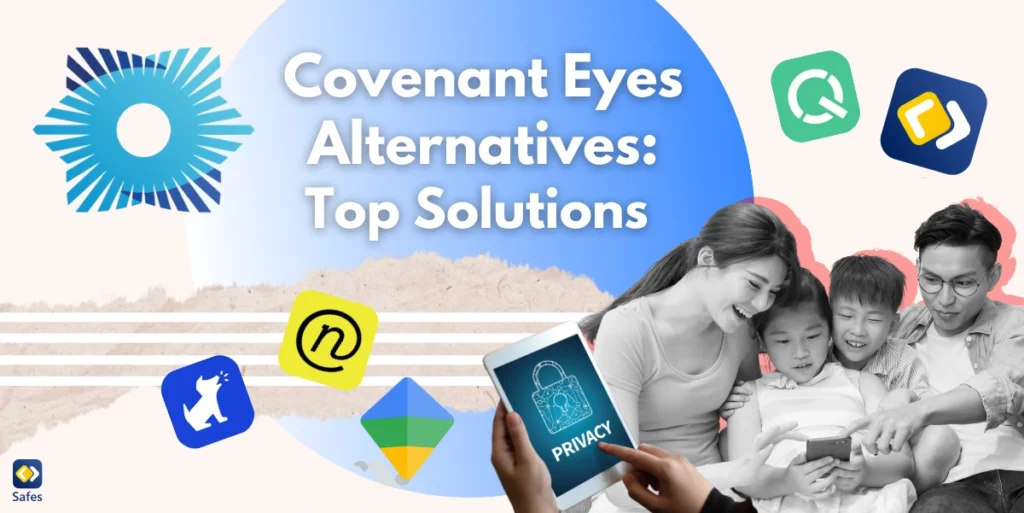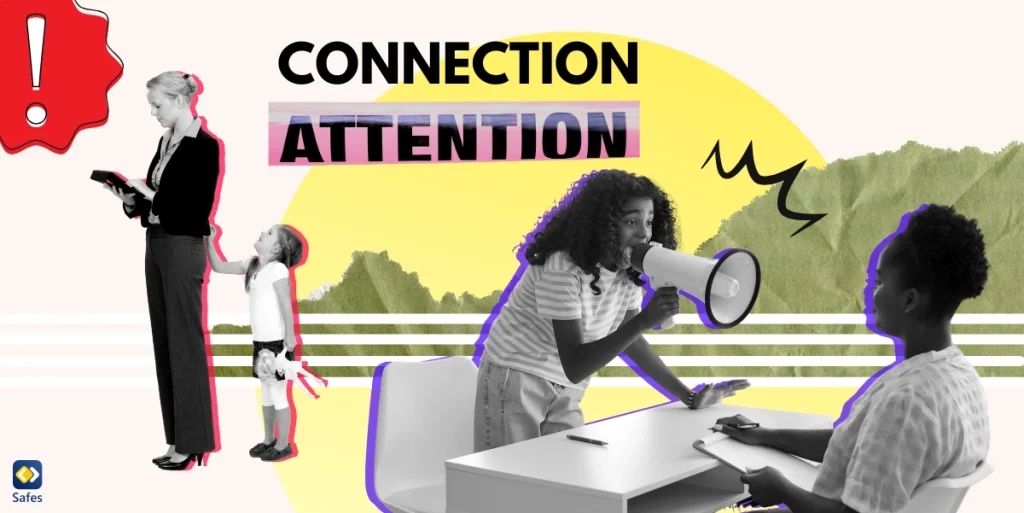Every click, comment, and share contributes to your child’s digital footprint. Think of it as an online trail reflecting their actions and interactions. Understanding the difference between a positive digital footprint and a negative one is crucial for their online reputation and future opportunities.
Download and Start Your Free Trial of the Safes Parental Control App
As parents, guiding your child toward a positive digital footprint can make a significant difference in their lives. A positive online presence opens doors to educational and professional opportunities. Conversely, a negative digital footprint could lead to issues like cyberbullying, privacy risks, or impact college admissions and job prospects.
By teaching your children about responsible online behavior, you’re helping them build a secure foundation for their future. Encouraging mindful internet use protects them today and ensures they have a positive digital footprint that will benefit them in years to come. These early lessons in digital responsibility can have lasting effects, shaping how they interact online as they grow older.
What Is a Digital Footprint?
A digital footprint is a trail we leave behind with every click, post, or search. For children, it includes every online action, even those they might not realize are public. Essentially, a digital footprint for children grows through everything from posting comments to liking a friend’s photo—actions that might feel small but add up over time.
There are two types of digital footprints: active and passive. An active digital footprint includes the things kids intentionally post online, like a profile picture or a comment on a friend’s post. On the other hand, a passive footprint builds from data shared behind the scenes—such as location or search history—that gets stored each time they connect to the internet.
To create a positive digital footprint, children have to learn how to be mindful online. Positive examples of a digital footprint include sharing creative projects, joining educational groups, or even celebrating classmates’ achievements. Encouraging thoughtful online habits helps build a digital presence that can open doors and protect them as they grow.
Let’s explore five ways parents can encourage a positive footprint for their children.
1- Educate and Empower
Talking to kids about online safety and privacy is one of the best ways to guide their digital habits. Keeping these discussions open and judgment-free makes it easier for them to ask questions or share any concerns. This openness builds trust, encouraging them to talk about their online experiences as they grow.
When it comes to building a safe digital footprint, you can provide your children with a few key safety tips for digital footprint. Encourage young children to avoid sharing personal information, like home addresses or school names. As they grow, teach them to assess each post’s impact—considering if it shows respect for themselves and others.
Kids can learn to make good choices by using practical strategies, like the “Think Before You Post” rule. Encourage them to pause and consider if a post is something they’d be proud of later. Empowering children with these thoughtful guidelines helps them actively shape a positive online presence, step by step.
2- Be a Role Model
Children often imitate what they see, which is why modeling positive online behaviors can be really impactful. If kids see their parents being respectful and thoughtful online, they’re more likely to follow suit. This approach naturally builds their social media literacy while reinforcing positive online choices in everyday life.
Parents can also set up a “digital footprint activity”. Set aside time for everyone to review their online profiles together as a family. Look at posts, comments, and pictures, and discuss what a positive digital presence looks like. This activity helps kids understand their own impact and feel more aware online.
Sharing your own online experiences can leave a lasting impression. Discuss times you made thoughtful choices or learned from digital missteps. Stories like these offer lessons that stick, showing kids how real-life values can shape a positive digital footprint.

3- Set Clear Boundaries and Guidelines
Setting boundaries around what can be shared online helps children understand how to manage their presence. Together, decide on things kids should not post on Instagram (or any other social media platform), like personal information or photos in specific locations. These guidelines create a foundation for safe and thoughtful sharing, which can shape their online habits.
A family agreement on digital conduct can turn online safety into a shared effort. Include a regular digital footprint check where everyone reviews their accounts to keep track of public posts and settings. This simple habit allows everyone to stay mindful of their online impact while providing a sense of shared responsibility.
To make monitoring easier, consider tools that help you track and manage your child’s online activity. Resources like parental control apps or browser settings allow you to oversee their online footprint and gently guide them in building a secure, positive presence without feeling too restrictive.
Safes: Your Partner in Parental Control
Parental control is key to helping your child create a positive digital footprint, and that’s where our Safes comes into play. Safes provides tools to monitor and manage your child’s online activities, reinforcing the boundaries and guidelines you’ve set. This ensures they’re making smart choices while navigating the digital world.
Interested in giving Safes a try? We offer a free trial so you can see how it supports your family’s digital journey. Getting started is simple—downloads are available on both iOS and Android. With Safes, you can confidently guide your child toward a safe and positive online presence.
4- Encourage Positive Contributions
Encouraging kids to create a positive digital footprint can make their online experiences enriching. Suggest activities that showcase their creativity and kindness, like sharing tips on a hobby or posting supportive comments on friends’ posts. When they actively contribute in uplifting ways, they build a reputation rooted in positivity.
To help kids grow a strong digital presence, introduce age-appropriate activities that encourage them to engage meaningfully. They might volunteer with a community project, support environmental causes, or even write a blog about a favorite subject. These actions shape their digital identity in ways that reflect their values and interests.
Remind them of the simple power in showing kindness online. When children learn to comment with empathy and treat others respectfully, they create an online space that feels safe for everyone. These small actions are the foundation of a positive digital footprint that can grow with them over time.

5- Regularly Review and Clean Up
Regular digital footprint checks are essential to keep their online presence clean and safe. Set aside time as a family to look over posts, tags, and comments. These checks help you spot any outdated or inappropriate content, allowing you to maintain a positive online presence together.
Monitoring doesn’t have to feel like policing—it can be a family activity that fosters awareness. Show them how to search their name online to see what pops up. By checking their digital footprint together, they gain valuable insight into how each post or comment shapes their reputation.
Create a checklist to help them keep their digital footprint positive. Include items like “delete old posts,” “review privacy settings,” and “unfollow inactive accounts.” This list empowers them to manage their digital presence thoughtfully, making sure it reflects who they are today and the future they envision.
Conclusion: A Positive Footprint Lasts a Lifetime
Building a positive digital footprint is more important than ever for our kids. Everything they’ve learned—from thinking before posting to contributing positively online—shapes how others see them now and in the future. By focusing on positive actions, they lay the groundwork for opportunities down the road.
Remember, creating a positive online presence isn’t a one-time lesson; it’s an ongoing part of their digital education. As technology evolves, so do the ways our children interact with it. Keeping the conversation going ensures they stay aware and prepared for new challenges and opportunities.
As parents, staying involved and supportive makes all the difference. By keeping open lines of communication, setting clear guidelines, and using tools like Safes, you can help your child navigate the digital world confidently. Your engagement empowers them to make smart choices every step of the way.
Your Child’s Online Safety Starts Here
Every parent today needs a solution to manage screen time and keep their child safe online.
Without the right tools, digital risks and excessive screen time can impact children's well-being. Safes helps parents set healthy boundaries, monitor activity, and protect kids from online dangers—all with an easy-to-use app.
Take control of your child’s digital world. Learn more about Safes or download the app to start your free trial today!




